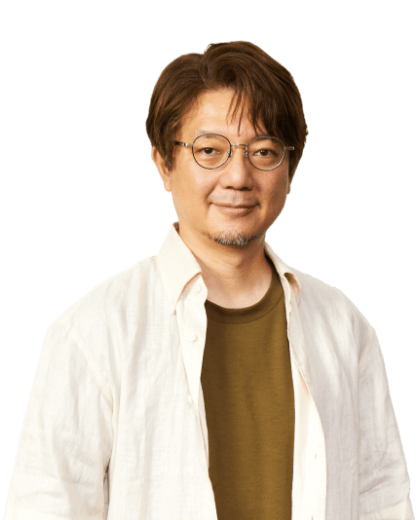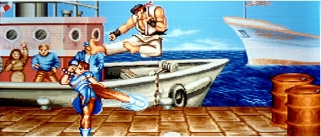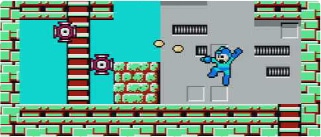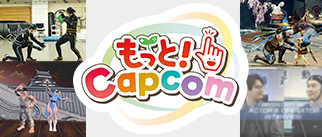- Value Creation
Story (PDF) - CEO
Commitment - COO Growth
strategy - CHO
Commitment - CFO
Commitment - Development
- Corporate
Governance
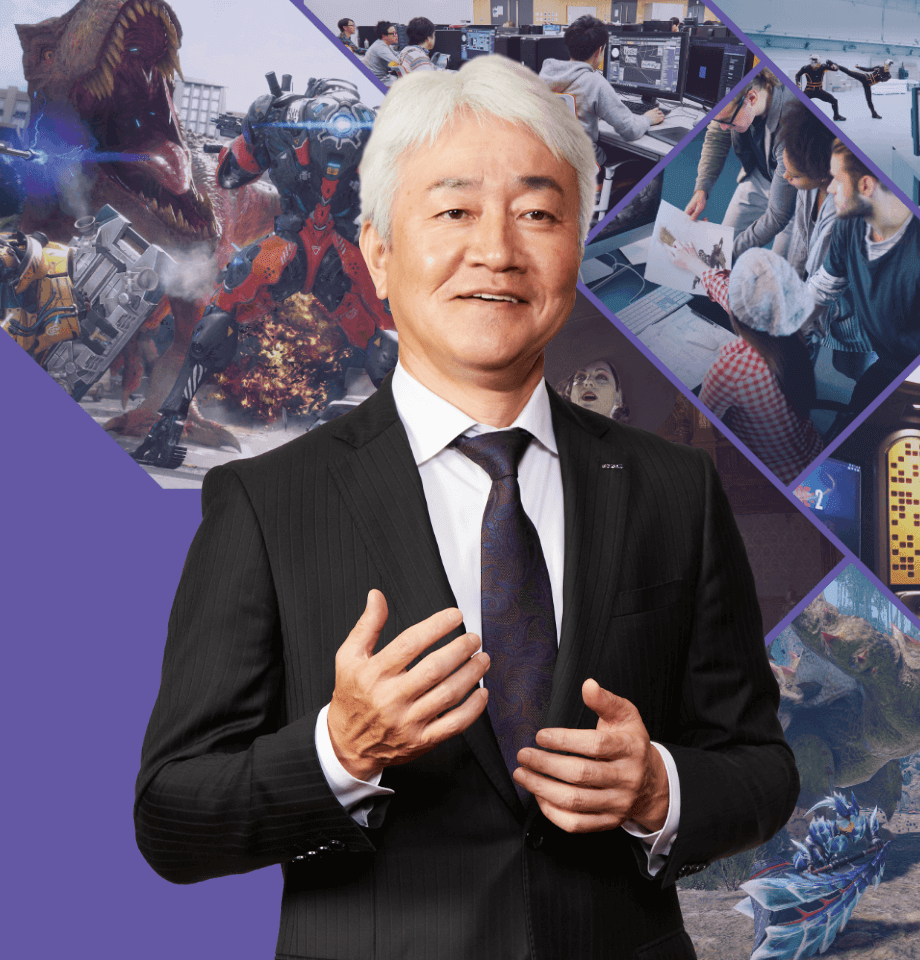
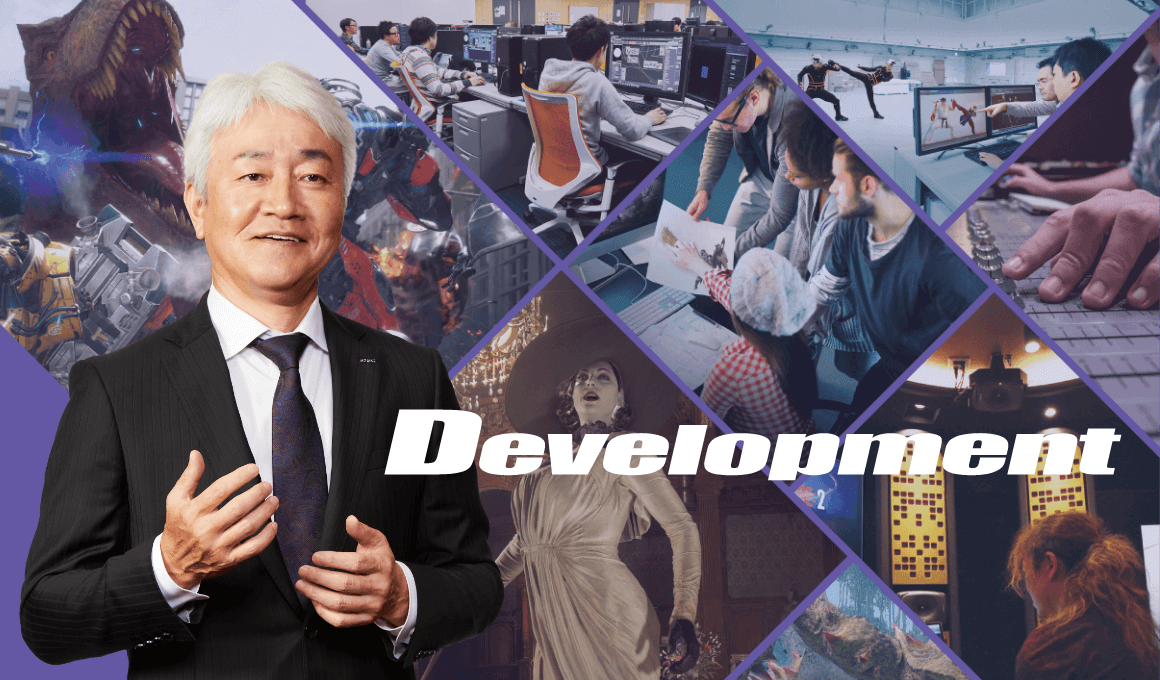
Strengthening R&D human resources to stably produce global IPs that support performance growth
Yoichi Egawa
Director and Executive Corporate Officer in charge of Development Divisions and Pachinko & Pachislo Business Divisions of the Company
-
Cultivate the next generation of R&D leaders
Train globally competitive developers through our new human resources investment strategy
For details “Hiring Activities” and “People in Development”

-
A world-class development environment
An unparalleled, cutting-edge creative environment
For details, please refer to “Development Environment”

-
Continuously evolving technical research
Honing the essence of our brands and providing unprecedented experiences with our creative and technical capabilities
For details, please refer to “Technical Development”


Overall development policy
With the popularization of digital sales and diversification of gaming devices, the global trend of being able to play games anytime, anywhere is accelerating—and with the spread of social media, anyone can be an influencer. In this environment, in order to create hits it is essential that we develop games while coordinating with our operational divisions. This entails that we carry out game development with an awareness that we are delivering our games to as many people around the world as possible via both a sales strategy that utilizes digital events to communicate effectively, and our Single Content Multiple Usage strategy that utilizes movies and licensed products. Meanwhile, it remains crucial that we continue to produce one-of-a-kind content that can be successful in the global market.
Capcom aims to be the world’s best game content company. It goes without saying that we are putting great effort into producing games of world-class quality; however, we are also making calculated appeals to players through ongoing services. These services continuously stimulate their interest with strategic digital sales and the steady release of additional content that underpins that quality in an effort to increase satisfaction.
On top of the know-how that we have amassed thus far, looking to the future, we are challenging ourselves to develop quality titles that will pioneer the next generation of games with visual technology that produces high-impact graphics as well as improved network technology.
Development strategy
Based on our medium-term goals, as the head of development, I am striving to fulfill my revenue responsibilities by allocating 90% of the development investment budget to the creation of popular series IP, such as Resident Evil and Monster Hunter. At the same time, we are also promoting the development of our online ongoing services business model. This allows more players to enjoy our hallmark Capcom craftsmanship over the long-term by providing additional DLC and other content. Our efforts to create new IPs also continue. Most recently, we announced Pragmata and Exoprimal for the latest generation of consoles, and we are making steady progress on their development.
Our proprietary game development engine, RE ENGINE, is an integral part of Capcom’s content development. RE ENGINE is an outstanding game engine that not only makes it possible to develop high quality games while reducing development costs, but also maximizes the performance of each piece of hardware. We will continue to evolve this proprietary engine while remaining proactive in our approach to state-of-the-art research and technology, such as VR, while aiming to enhance our lineup.
Cooperative approach in Development Divisions
Hit titles are not the product of chance, but the result of each team’s continued collaborative efforts.
Game development at Capcom takes place on a large scale and over a long period of time. Taking a project from concept to reality requires more than an individual’s abilities; teamwork is also a vital element. In terms of technology we use RE ENGINE, and those responsible for technological research are integrated into the title development team to provide the optimal development environment and support for each title. In terms of quality, our Quality Control Division checks whether titles under development operate properly while also looking at the fun and playability of the games. They then share their opinions with the development team in an effort to improve quality.
Monster Hunter Rise and Resident Evil Village, which were developed within just such an environment, exceeded our sales expectations and received acclaim from players. Going forward, we will continue to strengthen our cooperative approach as we strive to create the world’s best game content.
Training developers
People are at the core of creating high quality games. We are working to build a comfortable environment for our game development divisions so that our creators can focus on giving their best. Since 2013, we have hired more than 100 developers each year, and today our development workforce stands approximately 2,500 strong. However, it is essential that we continue to secure human resources and hone their skills even further to sustain growth in the medium-to-long-term. Currently, we give newly hired young employees the chance to acquire know-how and skills through hands-on experience in the field. We are making steady progress with their training via game development experience that is both rigorous and quality focused.
We have set goals and clarified milestones for training younger employees to expedite their development and grow the number of high performers. By promoting work assignments based on the right employee for the right job, creating opportunities for training, and improving employee competency, we seek to strengthen our development capabilities.
This past spring, we reorganized our human resources operations in the development divisions to further promote strategic investment in human resources. Through this, we support human capital with the aim of promoting business growth in our development divisions and are able to secure the people and capabilities required to grow title profits and productivity.

-
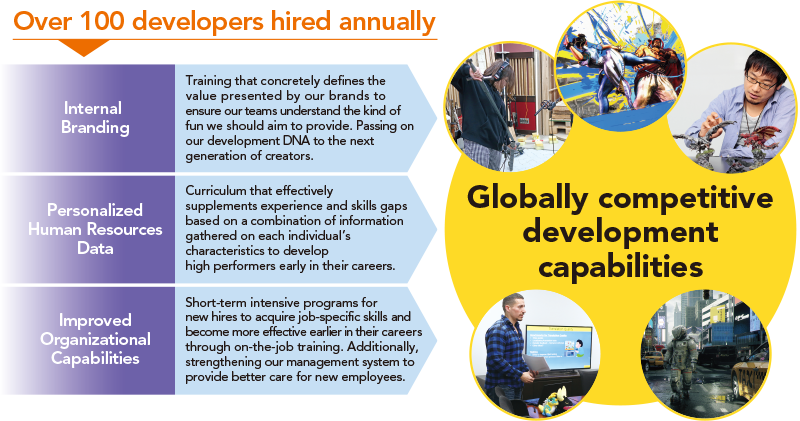
-
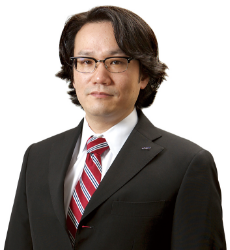
Nobuyuki Matsushima
Managing Corporate Officer Head of R&D Management Division
-
Passing on the Capcom DNA to the next generation while building world-class skills and sensibilities for new employees
In order to continue providing the global market with content of value, we must channel our efforts into maintaining world-class development capabilities. We do this by passing on our DNA— encoded to create the world’s best entertainment—to the next generation of creators while integrating it with the skills and sensibilities that new talent bring with them. To that end, we have to secure new human resources who possess diverse values and sensibilities, and how we train them will be critical. Under our new human resources investment strategy, the R&D Human Resources Department works for everyone who is engaged in development, and has begun refining our environment and training curriculum alongside the managers within development. This will enable our people to acquire essential skills and techniques based on the key concept of understanding what sort of entertainment players enjoy regardless of language or culture, within a world where we can connect with anyone, anytime, anywhere.
Three training policies that strengthen competitiveness
There are three human resources training policies: improved organizational capabilities, personalized human resources data, and internal branding.
In our training for new employees, we offer short-term intensive programs to acquire job-specific skills and on-the-job training to help them become more effective earlier in their careers. Additionally, we are building a system of management to provide follow-ups and care for new employees, and other measures within our training to improve our organizational capabilities.
Next, we have taken on a new initiative to promote the personalization of human resources data.
In addition to analysis of centrally managed human resources data, we have also started to strengthen analysis of predictive information that incorporates marketing concepts in order to create an environment that can manage talent strategically. Analyzing competency, which is a behavioral trait of high performers, we are implementing a curriculum from the perspective of how to train people as high performers as early as possible to effectively supplement gaps in experience and skills based on information gathered on each individual’s unique combination of characteristics.
And most importantly, we are strengthening our internal branding efforts with the next generation of creators in order to pass on our content development DNA. We are conducting training to help employees understand the sort of entertainment we aim to provide by concretely identifying the value of our content and channeling that into game development. In addition, we are putting effort into building an environment where employees can learn more effectively about the world-class technologies required for next-generation development; for example: geometric optics, rigid and fluid body dynamics and kinematics, network technology, AI, information security, and data analysis.
Honing our sensibilities to connect to the world with unique emotional experiences
The curiosity to continuously pursue the essence of fun and the courage to constantly challenge yourself. Capcom wants people with these aspirations. Each of our employees is honing their sensibilities to connect with the world on an emotional level as only Capcom can do. We are creating a training environment where the people who make up the foundation of our company can utilize their skills and curiosity to drive one another to be better, so that we can continue to create play that has value. The entire company is working toward this goal together under the flag of the new human resources investment strategy.
-
-
-
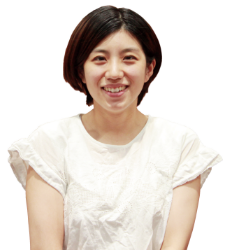
Chikako Kijima
Gimmick/Level Designer
Game Development Section 5
Game Development Department 1〈Credits〉
Resident Evil 7: Biohazard
Resident Evil 2
Resident Evil Village -
Creating never-before-seen games with teamwork
When I applied to Capcom, I did so because no other company provided the opportunity to work on games with the same level of cutting-edge graphics. Since joining, I have primarily worked on the Resident Evil series, which continues to captivate the world through its state-of-the-art technology, and I am responsible mainly for creating backgrounds and gimmicks. I really felt the pressure when I was appointed Lead Gimmick Designer for puzzles for the first time on Resident Evil 2, but I also realized that communication and teamwork would be critical to succeed. I strove to coordinate with my team and together we pulled it off, leading to a great reception from players, which made me immensely happy. Two years ago, I returned to work after giving birth and taking childcare leave. The environment is just as rewarding as it was before; this is where I want to continue creating new games while squaring off with new challenges, making use of the skills I cultivated during my work on game series.
-
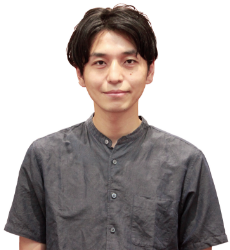
Masanari Murakami
UI Designer
Game Development Section 2
Game Development Department 2〈Credits〉
Dragon’s Dogma Online
Resident Evil 2 -
Further increasing the appeal of a game with new UI
I get to be involved in the development of titles I often played in my personal life, such as Resident Evil. This brings real satisfaction to my work as Lead UI* Designer, where I am responsible for creating the control interface environment for players. During my third year at the company, I was appointed as Lead UI Designer for the first time on Resident Evil 2. I was nervous, and I felt unsure about the design direction, but as I consulted with more senior employees, I grew more capable in devising solutions that I felt satisfied with. At Capcom I am surrounded by colleagues who share the same vision of creating good games, and the environment allows me to do this while exchanging ideas and opinions, which drives all of us to improve. As I continue to learn from the diverse experiences of my highly skilled senior team members, I will also continue to pursue innovative, easier to use UI.
* UI is the abbreviation for User Interface. UI designers coordinate and design display screens and control methods for exchanging information with users.
-
-
-
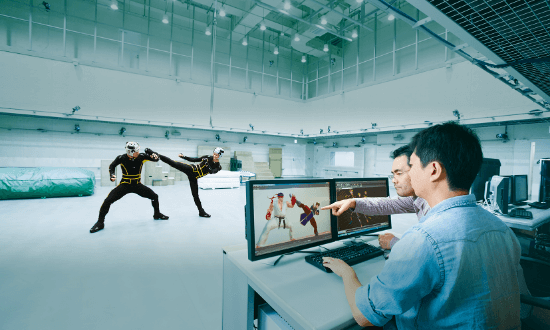
-
Our motion capture studio reproduces realistic movement of people and objects
At our motion capture studio we use infrared cameras to detect the movements of people and objects in the real world and convert that into computer data. We have one of the largest studios in Japan, which boasts a 7-meter high ceiling making it possible to film wire-based acrobatics, stunt falls, and other actions performed from great heights. This allows us to pursue realistic motion in our characters and objects.
-
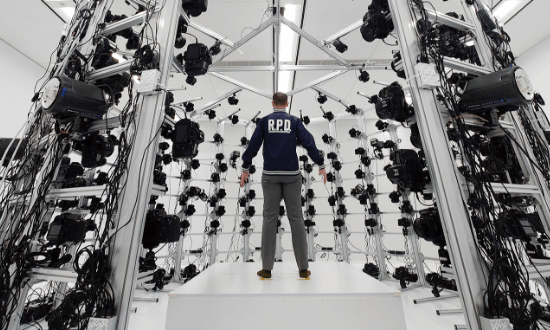
-
3D scanning studio reduces workload while raising precision
Our 3D scanning studio is one of the world’s largest and is equipped with approximately 310 cameras. Photographing people from 360° enables us to scan them as 3D objects. This significantly shortens the CG modeling process and allows us to pursue an even higher level of precision and quality.
-
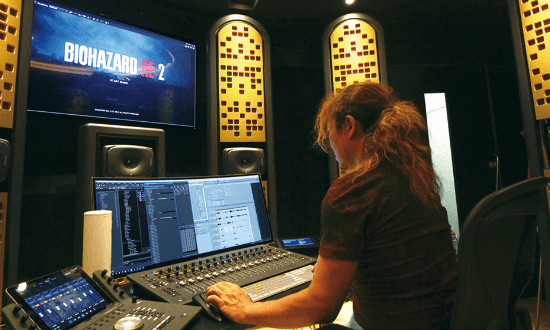
-
The Dynamic Mixing Stage: our 3D audio booth
We use a cutting-edge Dolby Atmos system, which can also be found in movie theaters, and which uses binaural technology capable of reproducing sounds with such reality you feel as if you are right there. This enhances the immersive feel of a game by influencing players’ aural perception in addition to their visual perception.
-
CAPCOM INTEGRATED REPORT 2022
PDF (Complete version) (PDF: 12.2MB / 104 pages)
PDF (by section)
Value Creation Story
(PDF: 3.5MB / 24 pages)
- Create Financial and Non-Financial Value
- Corporate Philosophy
- Value Creation Model
- History of Value Creation
- Major Intellectual Properties (IP)
- Effectively Leveraging IP
- Digital Strategy / Human Resources Strategy Performance
- ESG Highlights
- Business Segments Highlights
- Financial Highlights
- Medium- to Long-Term Vision



